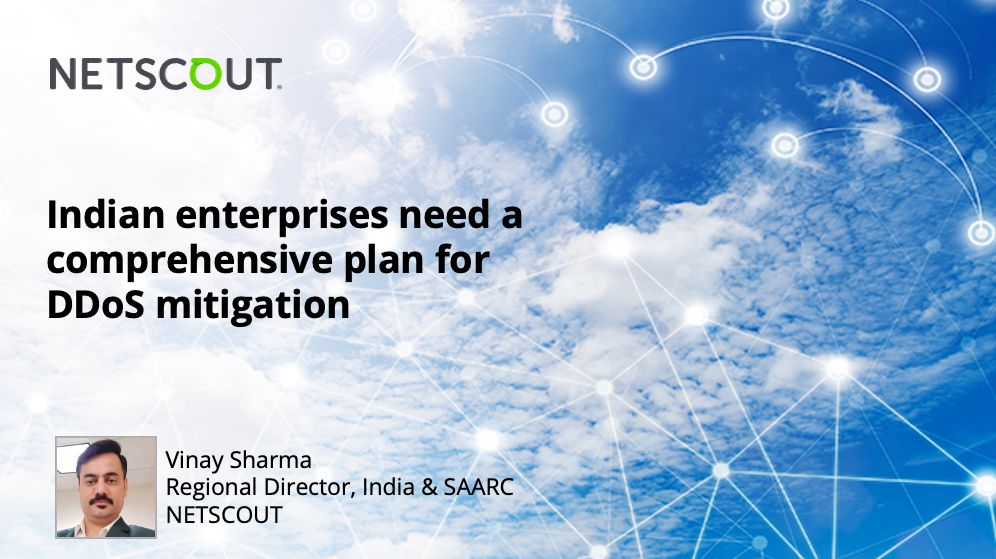Performance Management enables Businesses to Succeed in Hybrid Cloud and Multicloud Environments - Vinay Sharma, Regional Director, India and SAARC, NETSCOUT.

In today’s digital era, cloud computing has reached mainstream
status. Many organizations now want
computing and networking services to be delivered just like electricity. The cloud computing market is witnessing huge
growth driven by the cloud’s ability to improve business performance. There is also an increasing need for hybrid
cloud and multi-cloud systems with their economical pay-as-you-go models. According to Grand View Research, the global cloud computing market was
valued at USD 483.98 billion in 2022 and is expected to expand at a
CAGR of 14.1% from 2023 to 2030.
As per Flexera’s most recent 2023 State of the Cloud Report findings, cloud adoption is becoming more commonplace, with 65 percent of those surveyed considered heavy users—up from 59 percent in 2021 and 63 percent in 2022.
Cloud is part of the strategic IT plan in most Fortune 2000 enterprise organizations in one way or another. However, IT organizations do face challenges whether adopting SaaS applications, implementing PaaS/IaaS solutions, or migrating an application workload to the public cloud.
Key Concerns with Cloud
Computing
Cloud ecosystems, be it, on-premises, private or public cloud, or virtualized networks, are
mired in complexity. Disruptions and
outages in cloud-based applications can cost companies millions of dollars in
lost revenue, employee productivity, reputational damage, and recovery efforts.
The Flexera study also revealed the following concerns
?
Managing cloud spending (82 percent) has taken over as the top cloud
challenge for enterprises.
?
Cloud security considerations continue to be a primary concern with
adopters (78 percent).
?
Lack of resources or expertise (80 percent)
? Managing multi-cloud environments (80 percent)
Digital transformations, SaaS
adoptions, Cloud migrations, and a hybrid workforce have all significantly
altered the complexity of today’s connected world. Unfortunately, performance
problems have become more complex and challenging due to a lack of visibility
and control. Moreover, applications are spread beyond their own
data center into CoLo, Cloud, or SaaS environments, where there are several
edges to the combined network.
Many a time, the security teams have limited or no visibility into the
network. Unfortunately, by leveraging AI
and Machine learning technologies, cyberattacks are able to evade detection and
forensics. It is only in the network the
adversaries will not succeed in erasing their tracks.
Furthermore, due to automation and
orchestration, the security teams also have no direct control over such
environments. Only proper network visibility of the traffic flow can help to
address this issue.
With a few clicks and configurations,
companies can quickly scale their cloud environment to respond to changes in
demand, causing visibility gaps. Understaffed IT departments lack proactive
monitoring and analysis across the systems, servers, applications, and
endpoints that make up their evolving ecosystem. Without performance
management, it is difficult to quickly detect and troubleshoot degradations
before they affect employees and customers.
Also, for faster business outcomes, one needs scalable insights at every edge across the unique cloud workloads, environments, processes, and dependencies.
Cloud Visibility provides the Solution
Only solutions that provide complete,
real-time deep packet inspection across multi-cloud and hybrid environments can
address these concerns. They should be
able to remove
visibility blind spots by providing performance monitoring capability in any
infrastructure, for any application, for any user, anywhere, including, hybrid
cloud, cloud migrations, and SaaS and UCaaS applications.
These solutions should help
enterprises pinpoint and fix the root causes of bottlenecks, slowdowns,
degradations, and security threats hiding in networks and between applications.
For
migrating services and applications to the cloud, organizations need visibility
before, during, and after migration. They should be able to understand all
application and service dependencies and performance issues throughout the
process and ensure performance levels are maintained.
Post-migration,
organizations should be able to monitor performance and troubleshoot across all
environments simultaneously via a single pane of glass. The visibility provided
should ensure organizations receive performance intelligence and actionable
metadata regardless of the cloud provider.
The
solution should also provide support for both physical as well as virtual
environments, thereby reducing the need for, and the cost and complexity of
using multiple solutions.



